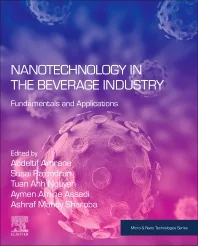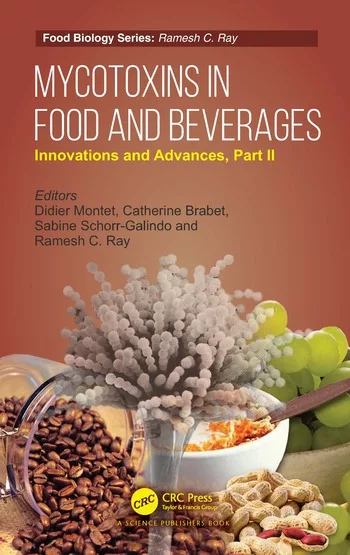Stevia sees surge in applications
Zero-calorie sweetener appeals to health concerns
Growing concerns about increasing rates of obesity and related diseases such as diabetes have bolstered the need for new sweetener solutions. From 2009 to 2010, 35.7 percent of U.S. adults were obese, according to data released in January by the Center for Disease Control and Prevention (CDC), Atlanta. During that same time period, 16.9 percent of U.S. children and adolescents were obese, according to the National Health and Nutritional Examination survey released by the CDC. To help address these numbers, beverage-makers are turning to ingredients, such as stevia, to help consumers who are looking to lower their calorie consumption and glycemic intake.
“People like sugar; it is natural, but the high calories in sugar cause a variety of side effects including obesity and also some severe diseases like diabetes [and] cardiovascular disease,” says Luke Zhang, chairman and chief executive officer of GLG Life Tech Corp., Vancouver, Canada. “… Obesity is the main cause for diabetes [and] cardiovascular disease, and high calories are one of the main causes for obesity, so the main benefit to use stevia in beverages is a zero-calorie [profile].”
Since the December 2008 generally recognized as safe (GRAS) approval by the U.S. Food and Drug Administration (FDA) of rebaudioside A, or reb-A, a steviol glycoside from the stevia plant, the zero-calorie ingredient has seen its presence in the food and beverage market surge.
According to a Rockville, Md.-based Packaged Facts report titled “Sugar, Sugar Substitutes and Sweetener Trends,” 46 food and beverage products containing stevia were introduced to the U.S. market in 2009, based on its ProductLaunch Analytics data. In 2010, the number of new product introductions increased to 76.
A majority of the products were tabletop sweeteners at 70.1 percent, with stevia-sweetened flavored or enhanced waters accounting for 20.3 percent in mid-2010, according to the Packaged Facts report. Stevia-sweetened carbonated beverages accounted for approximately 2.5 percent, and the remaining 7.1 percent was made up of stevia-sweetened tea, refrigerated juices, functional beverages, shelf-stable juices, crackers, diet formulas and non-food products such as digestive aids and herbal formulas, the report states.
“Consumers who choose sugared products need greater choices, which will help with the issue of obesity in a natural way,” says James Kemplan, vice president of marketing for Sweet Green Fields, Bellingham, Wa. “Stevia provides a new choice that tastes great, is healthy and all natural.”
The Packaged Facts report also notes that of the food and beverage launches in 2010, 21 categories contained stevia with functional drinks, concentrates and tea being the three leading categories.
Following FDA approval, Cargill Inc., Minneapolis, launched Truvia in 2008, which was adopted by The Coca-Cola Co. for use in some of its products. Truvia combines stevia with erythritol, a natural, non-caloric sweetener. Also launched in 2008 was PureVia by Whole Earth Sweetener Co., which has been adopted by PepsiCo for use in some of its products.
Most recently, the European Commission Regulation authorized the use of steviol glycosides as non-caloric sweeteners in the European market. Following that approval, in March, The Coca-Cola Co. announced the introduction of Sprite sweetened with sugar and
Truvia stevia in France. The formulation will deliver a 30 percent sugar reduction, Cargill says. Nestea sweetened with Truvia stevia, also was introduced in France.
Natural alternative
In addition to being a zero-calorie sweetener, stevia and its extracts boast an all-natural claim.
“Stevia is nature’s no-calorie sweetener, allowing food manufacturers to reduce sugar and calorie levels in beverages and meet the demands of consumers looking for more natural, great-tasting beverages,” says Jason Hecker, vice president of global marketing and innovation at PureCircle Ltd., Oak Brook, Ill.
In Packaged Fact’s report, the market research firm cites a May 2008 online Harris Poll of 2,602 U.S. adults that found that half of those surveyed thought it was extremely important or very important to know what sweeteners are used in the food and beverages they purchase. In addition, more than half of respondents thought that artificial sweeteners were only somewhat or not at all safe, the “Sugar, Sugar Substitutes and Sweetener Trends” report states. More than half were “somewhat,” “very,” or “extremely” concerned about the amount of artificial sweeteners consumed by their families, according to the report.
“In a recent Mintel report, stevia was highlighted as capitalizing on the all-natural and wellness trends,” Sweet Green Fields’ Kemplan says. “This is only the beginning for stevia, as beverage products continue to come to market to address this consumer demand.”
Suppliers continue to develop products to help beverage developers appeal to the natural beverage consumer. Jungbunzlauer, Newton Centre, Mass., offers its EryliteStevia, a blend of its natural sugar alcohol Erylite product and rebaudioside A. EryliteStevia is a zero-calorie, natural sweetener that can be used as a sugar replacement in food and beverage products, the company says.
Shanghai Freeman Americas, Piscataway, N.J., distributes Zhucheng Haotian Pharm. Co. Ltd.’s high-purity reb-A and steviol glycosides, which are all-natural sweeteners with zero calories, zero carbohydrates and zero glycemic index, it says. The powdered concentrate is 200 to 400 times sweeter than sugar, it adds.
Stevia’s association with natural also offers beverage-makers more opportunities with their products. Simon Almaer, Truvia ingredient director at Cargill, says customers who use Truvia in their products have the ability to make “naturally sweetened” claims.
Suppliers also note that more and more beverage-makers are recognizing that stevia can help them deliver the type of products that consumer trends are now demanding.
“Beverage companies around the world are recognizing this as they look to meet consumer demand for more natural beverages with fewer calories and satisfy public policy pressures to reduce added sugars,” PureCircle’s Hecker says.
The right pairing
Although stevia offers beverage developers an ingredient that contains zero calories and is natural, the ingredient presents some challenges when it comes to the taste profile.
“Stevia is natural, [but] it has an aftertaste such as bitterness or a licorice taste, so it tastes different from sugar [and] from artificial sweeteners,” GLG’s Zhang says. “It is a cool taste, a clean taste; however, the new quality of stevia used in beverage and food will result in unpleasant taste, so to formulate stevia as a main sweetener [it] really needs other natural ingredients to make stevia taste like sugar. That is the main challenge for stevia in the industry.”
The stevia plant’s steviol glycosides are its sweetening properties, which are derived from its leaves, according to Bath, U.K.-based Zenith International’s 2011 “Stevia Report.” Eleven steviol glycosides have been identified to offer a sweetening effect between 50 and 400 times sweeter than sucrose, the report adds. One of the four main steviol glycosides, rebaudioside A, is 200 to 400 times sweeter than sugar, according to Zenith. Stevioside is 150 to 300 times sweeter than sugar and the combination of the two represents 90 percent of the steviol glycoside content and is the main determinant of taste, the report adds.
“Balancing acids and flavors and reaching the desired mouthfeel is critical in beverage formulations,” PureCircle’s Hecker says. “PureCircle’s applications team has worked extensively with stevia in beverages and has developed many go-to formulations with our ingredient portfolio to help customers find the best solutions for their beverages.”
Beyond zero-calorie options, Hecker notes that some formulators are using stevia to make up to 30 percent sugar reductions in their regular products, while others are launching new lines with 30 to 100 percent calorie reductions.
“The trend toward 25 to 50 percent calorie reduction has started, and we expect the winning combination of sugar and stevia will only accelerate,” he says.
Calorie reduction presents an opportunity for stevia to be used to formulate mid- or low-calorie beverages, Sweet Green Fields’ Kemplan says.
“We believe that by using stevia, beverage manufacturers can create a ‘right calorie’ segment,” he says. “The body needs calories, but does not need all the calories of a full-sugared product. When a formulator combines sugar and stevia, the result is a beverage with less than 50 percent the calories and sugar, yet all the wonderful aspects of sugar: mouthfeel, sweetness on-set and the perfect level of lingering.”
Because of the different taste profile of stevia compared to sugar and artificial sweeteners, suppliers recognize the challenges with reformulating existing products.
“From a taste perspective, it makes a difference whether a manufacturer is reformulating an existing product or launching a new one,” Cargill's Almaer says. “In order to maintain, and ideally grow, the consumer base, a reformulated product must sufficiently match the existing flavor profile. New products, to which consumers have not yet become accustomed, do not present the same degree of challenge.”
Zenith’s report notes the improvements to stevia that have taken place during the last couple of years in regards to purity have helped reduce some of the ingredient’s bitterness, and therefore improved the overall taste.
GLG, which has been formulating with stevia since 1999, sees endless opportunities in the beverage marketplace.
“We have not found any category of beverage drinks [in] which stevia is not suitable; however, this is a new industry, a new generation of sweetener, so it will take time to develop stevia as a suitable sweetener in a beverage recipe product,” Zhang says.
Cargill's Almaer says he sees more opportunity for stevia in the alcohol and dairy markets. PureCircle’s Hecker also sees a future for stevia in the dairy category, particularly chocolate milk.
“There has not been a suitable sweetener for flavored milks,” he says. “Chocolate milk, in particular, is popular with kids and provides essential nutrients, but is often under fire for its higher sugar [and] calorie content. Consumers generally consider artificial sweeteners an ingredient to avoid in the family. PureCircle’s consumer research has shown that stevia is being accepted by moms as a natural sweetening ingredient for the entire family.”
Hecker notes that carbonated soft drinks (CSD) also have received pressure to lower their sugar and calorie content.
“CSDs represent a large percentage of sweetener usage globally, and prior to stevia there wasn’t a mass scale natural sweetener available to help reduce calories in ‘regular’ products,” he says. BI
Looking for a reprint of this article?
From high-res PDFs to custom plaques, order your copy today!







